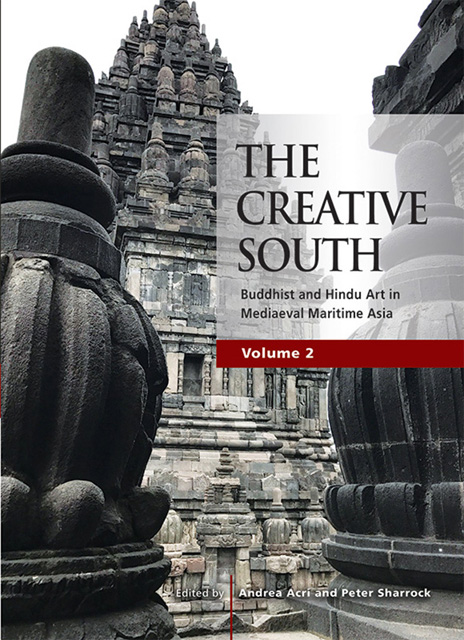Chapter 10 - New Archaeological Data from Mount Penanggungan, East Java
Published online by Cambridge University Press: 30 June 2023
Summary
Penanggungan is the name of an extinct volcano lying in the province of East Java near the city of Surabaya. Although rising just 1,650 m above sea-level, the mountain forms an impressive landmark on the northern plains, where it serves as a natural boundary separating the regencies of Pasuruan and Mojokerto (Fig. 10.1). To the east, at a distance of some 25 km, can be found the ancient site of Majapahit at Trowulan (Mojokerto), while to the south lie the majestic peaks of the Arjuna-Welirang massif.
One only has to glance at Penanggungan's unique form, comprising four minor prominences arranged symmetrically around a steep conical summit, to understand how the mountain came to be identified with the sacred five-peaked Mahāmeru of Hindu and Buddhist tradition. Available historical sources confirm that Mt Penanggungan was formerly known as Pavitra (‘pure’, ‘holy’, ‘purifying’), a name referred to in both early Javanese and Sundanese literature, as well as in at least one 10th-century inscription from eastern Java. According to a legend immortalized in the Old Javanese Tantu Paṅgәlaran, the holy Mahāmeru was removed from its original position in the Himalaya and brought to Java through the combined effort of the gods. During the journey, however, the topmost section became detached and fell to earth, forming the mountain Pavitra, while the remaining mass was set down in the Tengger highlands at the eastern end of the island, becoming known as Mt Semeru (3,676 m), Java's highest peak.
Given the mountain's supreme sanctity, as well as its proximity to the former Majapahit capital, it is hardly surprising that Penanggungan preserves an abundance of archaeological remains. Curiously, however, it was not until about eighty years ago that this rich cultural legacy began to attract serious attention. While it is true that a number of ancient sites located at the foot of the mountain, such as Jolotundo, Belahan and Jedong, had already been documented during the 19th century, there was little knowledge of the conditions on the upper slopes. Early published field reports are limited to a brief note concerning the remnants of a structure on the mountain's summit by the vulcanologist H. Zollinger (1846: 134) and a romantic description of Candi Selokelir by F.L. Broekveldt (1904: 23–27), who visited the site in 1900 while serving as controleur at Trawas (Mojokerto).
- Type
- Chapter
- Information
- The Creative SouthBuddhist and Hindu Art in Mediaeval Maritime Asia, pp. 209 - 245Publisher: ISEAS–Yusof Ishak InstitutePrint publication year: 2022



